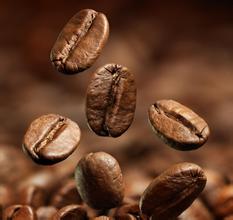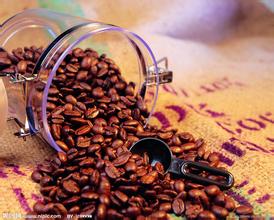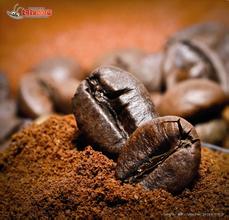The global price of coffee beans affected by drought in Brazil is likely to rise by another 50% this year.
Brazil supplies one-third of the world's coffee demand, but Brazil's coffee harvest in 2014 was the worst in three years, coffee prices rose further, once rising above two dollars per pound, Starbucks and other large coffee chains, soon followed by higher coffee drink prices.
The two main varieties of coffee, the most popular market is Arabica coffee beans, this coffee production in Latin American countries, including Brazil and Colombia, the United States ICE Exchange coffee futures, is from 19 countries Arabica coffee beans as trading.
Robusta is the second largest variety of coffee produced in the world, accounting for about 20% of the world's coffee production. It has a sour taste and is mainly grown in tropical countries such as Indonesia. Most of it is used as instant coffee.
Colombia is the world's third largest coffee producer and the world's second largest Arabica coffee bean producer. Although Colombia has accelerated its production to meet the global demand for coffee, Colombia's coffee production is only about a quarter of Brazil's. Even if the production increases, it will only temporarily relieve the coffee supply shortage.
Coffee farmers in coffee-producing countries need to earn at least $1 per pound of coffee beans. If the price of coffee beans falls below $1, the income of coffee-producing countries may be affected and production needs to be adjusted to support coffee prices. Coffee prices are influenced by harvest and supply and demand, while climate and coffee diseases are the main factors affecting harvest.
The market is worried about insufficient rainfall in the planting area
Brazil, which produces the world's largest crop of coffee, harvests from april to august, and investors worry that bean prices could return to as high as $2 a pound if rainfall in brazil's coffee-growing regions continues to be inadequate.
Arabica beans rose 3.2 percent to $1.6455 a pound Friday. Commodity investment managers are bullish on coffee in 2015, expecting coffee prices to rise 40% to 50%, coffee futures prices to easily rise to $3 per pound, and coffee futures to rise above $3 per pound in May 2011.
Coffee production is in short supply, and prices naturally rise. Coffee traders and consumers have to pay high prices for coffee. Sales fell immediately after J. M.Smucker raised the price of its Folgers coffee brand.
Coffee roaster and trader Socafe said it was concerned about Brazil's coffee harvest in May and June and feared coffee prices would rise further.

Important Notice :
前街咖啡 FrontStreet Coffee has moved to new addredd:
FrontStreet Coffee Address: 315,Donghua East Road,GuangZhou
Tel:020 38364473
- Prev

Yunnan "Kiss first Coffee" caused controversy: the girl peeled beans with her mouth, trying to compete with cat shit?
After the stories of Kopi Luwak in Indonesia and big-breasted virgins picking tea in Henan, the same terrible thing happened in Yunnan. Recently, a coffee with a beautiful story suddenly became popular with local girls in Yunnan, peeling the coffee beans with their own mouth and then drying them to create a noble kiss coffee. In the past two days, Yunnan Kiss first Coffee suddenly became popular. He he.
- Next

Hougu Coffee will build another 20,000 ton Coffee production Line
Xing Meizheng, head of the coffee planting professional cooperative of the Xiadong Village Committee of Mangshi Town, told reporters that the cooperative was established in 2012 and was set up by 14 farmers, adopting the mode of unified management and collective processing, mainly to do a good job in rough processing of coffee and to increase the income of large coffee growers. Today, 180 farmers have participated in this coffee professional cooperative, which has become a relatively large profession in Mangshi.
Related
- Customers have "changed" Manner's new products! Shop assistant: Please don't mess around!
- Remove sockets in customer areas at Starbucks stores?! Netizen: I won't go if I really tear it down
- What is the difference between the taste steps of sun-dried coffee and washed coffee? Why is sun-cured coffee sweeter and washed coffee sour?
- The recipe for salty grapefruit dirty is revealed! Coffee Festival salty grapefruit dirty coffee making materials parameters ratio milk share!
- How about the flavor of Sunlight 74158 at Sidamo Banshaha Mathieu Processing Factory in Ethiopia? 74158 Share the proportion of coffee brewing parameters!
- What effect does Italian American coffee with filter paper have? Will coffee taste better if it is put on filter paper at the bottom of the powder bowl?
- What is the color difference in coffee beans? What are the characteristics of honey processed coffee beans? Why are the anaerobically treated coffee beans uneven in color?
- How does novice Xiaobai quickly get started and make coffee? Newbies learn to make coffee by hand and share the specific steps and process process!
- Costa tea has a shelf life of 100 years?! Expert: Unable to verify
- It's a huge uproar! American milk addition was rejected by Manner employees?!

